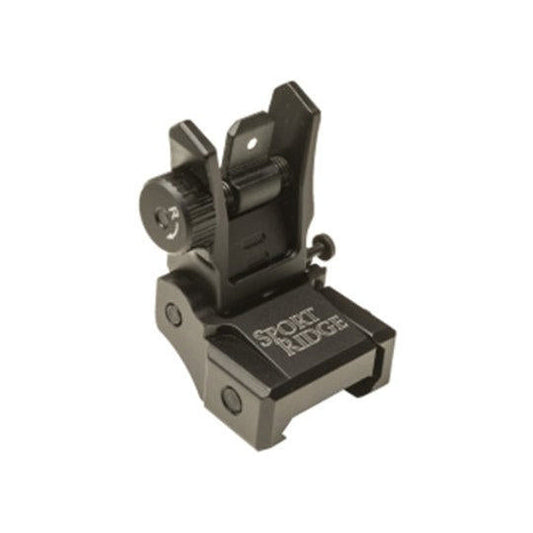

Sport Ridge AR15 Low Profile Sight Rear Black offers precise aiming capabilities, attaching seamlessly to any 1913 Picatinny rail for effortless installation. This rear sight enhances your shooting experience through its low light aperture, allowing for clear target identification even in challenging lighting conditions. Whether you're at the range or in the field, the design minimizes bulk, ensuring a streamlined setup that keeps you agile.
With adjustable windage, you can fine-tune your aim, increasing confidence in every shot. The sight locks securely in the upright position, ready for immediate use. Built to withstand the rigors of outdoor environments, this durable sight is an essential accessory for both tactical shooting and recreational training.
Key Features:
- ADJUSTABLE WINDAGE for precise targeting, allowing you to make quick adjustments based on your shooting conditions.
- LOW PROFILE DESIGN minimizes bulk, keeping your setup sleek and streamlined for easy handling.
- LOCKS IN THE UP POSITION ensuring that your sight remains secure and always ready for use.
- DURABLE CONSTRUCTION withstands the rigors of outdoor environments, providing long-lasting reliability.
- COMPATIBLE WITH MOST OPTICS enhancing versatility for various shooting setups, whether for tactical or recreational use.
- LOW LIGHT APERTURE allows for exceptional visibility in challenging lighting conditions, perfect for dusk hunting.
- EASY INSTALLATION on any 1913 Picatinny rail offers a hassle-free setup, getting you ready to shoot in no time.
- LIGHTWEIGHT DESIGN ensures minimal impact on your overall rifle weight, enhancing maneuverability.
Technical Specifications Table
| Specification | Details |
|---|---|
| Material | Aluminum |
| Weight | 5.6 oz |
| Dimensions | 3.5" L x 2" H x 1" W |
| Compatibility | 1913 Picatinny Rail |
| Aperture Type | Standard and Low Light |
What’s in the Box?
- Sport Ridge AR15 Low Profile Sight Rear Black
- Mounting hardware
- User manual
Customer Reviews
"I love this sight! It fits perfectly on my rifle and adjusts easily. I can really see the difference in low light conditions!"
"This sight is solid and easy to use. It holds zero well even after several rounds!"
FAQ
How does the Sport Ridge AR15 Low Profile Sight Rear Black perform in low light?
The sight features a low light aperture that enhances visibility, allowing you to identify and engage targets effectively, even in low-light scenarios like dusk hunting.
Is this sight durable enough for outdoor use?
Yes, the Sport Ridge AR15 Low Profile Sight Rear Black is constructed from robust aluminum, designed to withstand the elements and provide reliable performance under tough conditions.
Can I install this sight on other rifles?
The sight is specifically designed to fit any 1913 Picatinny rail, making it compatible with various rifle models that accommodate this mounting system.
Similar Models
Looking for more reliable optics? Discover our extensive collection of Sport Ridge products, including models like the Sport Ridge AR15 Front Sight for a complete sighting solution. Explore our full range for exceptional optics tailored to your shooting needs.
You May Also Like
Here’s some of our most similar products people are buying. Click to discover trending style.






